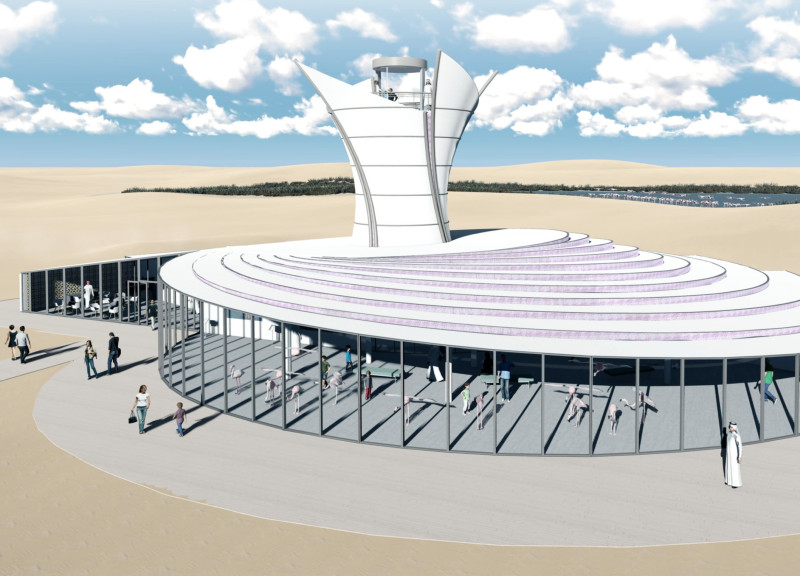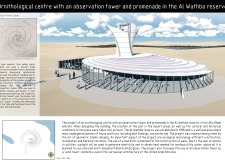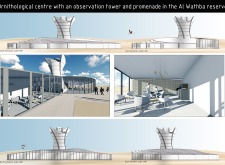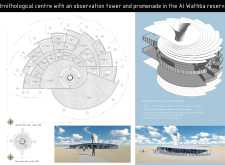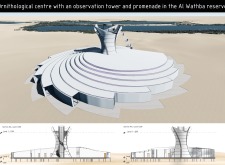5 key facts about this project
The ornithological centre is located in the Al Wathba reserve in Abu Dhabi. It serves as a space for observing and studying endangered species, particularly pink flamingos. The design integrates with the natural landscape, reflecting a commitment to ecological awareness as well as cultural significance. The centre aims to be both functional and educational, supporting conservation efforts through its architecture.
Design Philosophy
The design is informed by the Golden Ratio, which helps create a sense of balance in the building. This principle influences the proportions, guiding the width and height of the structure as well as the arrangement of columns and porticos. The incorporation of geometric Islamic design elements connects the centre to its cultural roots. This marriage of modern design and traditional aesthetics provides a meaningful backdrop for learning and appreciation of local wildlife.
Materiality and Sustainability
Mud bricks are used for the walls, providing good thermal insulation to maintain comfortable indoor temperatures even in the hot climate. This choice reflects a focus on sustainable building practices. The design also makes use of solar energy to supply electricity and heat water, utilizing colored and transparent photovoltaic glass as part of this strategy. These materials not only enhance sustainability but also support the overall visual language of the building.
Functional Layout
Visitors experience a well-organized flow throughout the centre. Pathways are clearly defined, guiding people through informative spaces and outdoor areas. A prominent feature of the centre is the observation tower, which functions as a wind tower inspired by traditional Emirati architecture. This structure offers elevated views of the reserve, allowing for engagement with the wildlife in a direct manner.
Design Elements
Every detail has been carefully considered to enhance the overall experience at the centre. The observation tower not only provides a vantage point for viewing but also aids in natural ventilation for the interior spaces. Such design choices indicate a strong focus on functionality while still considering the aesthetic impact. The centre thus fosters a deeper connection between visitors and the surrounding landscape, highlighting the importance of conservation and education in a beautifully designed environment.


